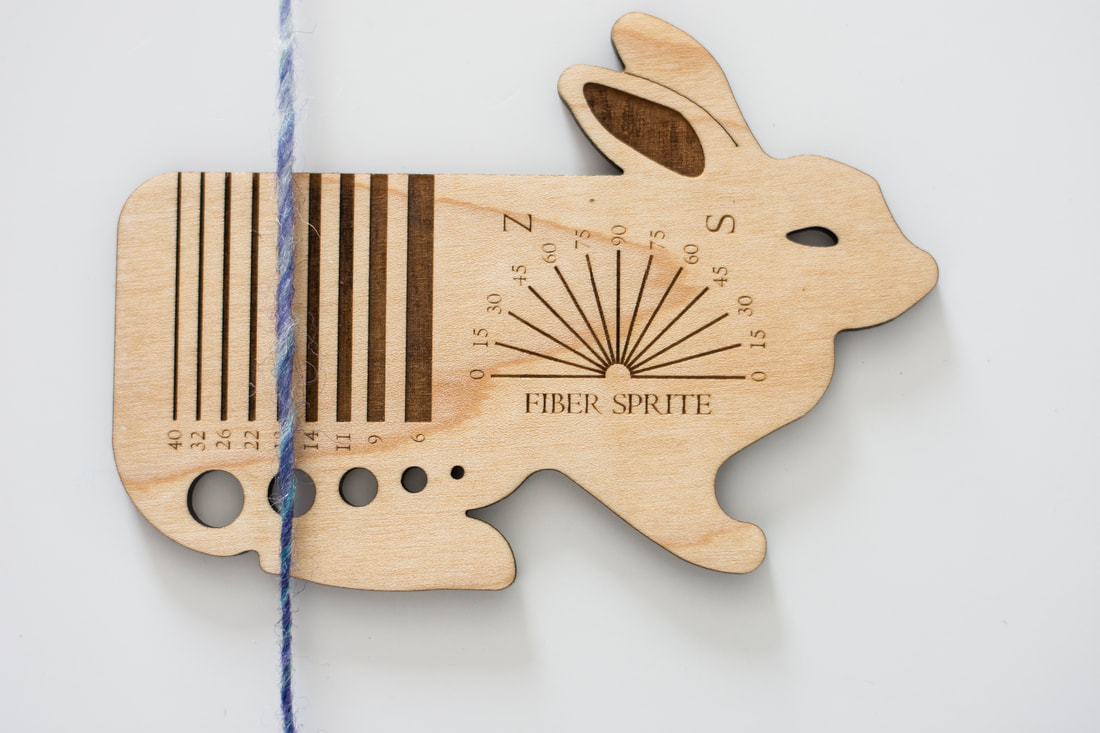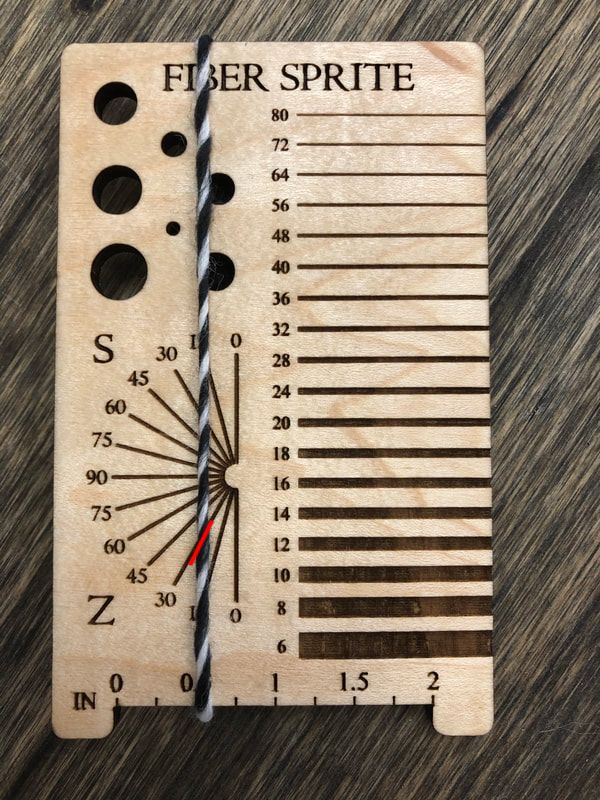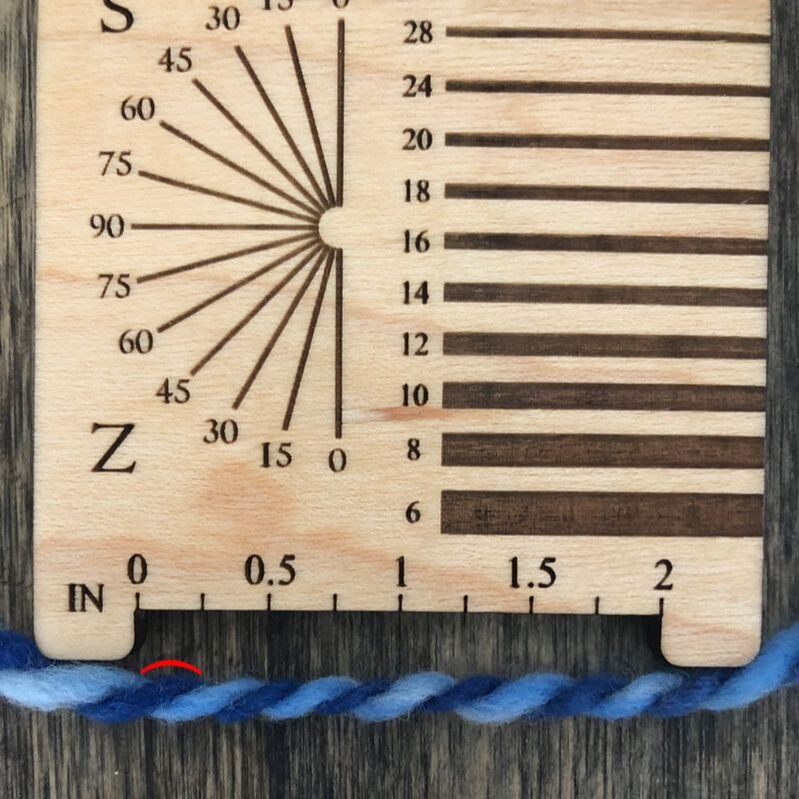|
There are as many ways to spin a gorgeous yarn as there are people who spin. Sometimes, getting a consistent yarn is really important - especially if we're spinning lots of yarn for a big project. There are lots of ways to make sure you're spinning a consistent yarn. One of my favorite ways is to use the Spinner's Multitool. It helps me prepare fiber, and then check my yarn as I'm spinning to make sure I'm getting the yarn I want. The Spinner's Multitool functions as a diz, WPI (wraps per inch) tool, and twist angle. The Ultimate Multitool also has a small 2" ruler that can help you determine twists per inch. These are all factors that can help you spin a consistent yarn. They're also helpful if you're trying to replicate another yarn in your stash. In this post, I'll walk you through all the ways you can use the Spinner's Multitool. In this video, I'm using the Ultimate Multitool. but if you're into something a little different, we also have a Sheep Shaped Spinner's Multitool, an Alpaca, a Bunny, and the Original. If you still have questions after watching the video, I've added some more information and closeup images to help. Using The Spinner's Multitool as a Diz Each Spinner's Multitool has several different holes. These are designed so you can diz fiber from a drumcarder, hand cards, a blending board, or hand combs. In this video, I share how to diz fiber from hand combs. Remember, the bigger the hole you use, the thicker your top will be (or roving, if using a carded prep). But you might be surprised - even though those holes seem pretty small, a lot of fiber fits through them! Dizzing fiber is a great way to prepare fiber for spinning. I find that hand-dizzed fiber is a real pleasure to spin. It is light and fluffy and fun to work with! Learning to diz fiber can take some practice. The key is to not try to get too much fiber through the diz at one time, or else you'll get stuck and frustrated. When this happens, back off a little bit, draft the fiber gently, and then keep going. And remember to be patient with yourself! The results are well worth it. Checking the WPI (Wraps Per Inch) To check the WPI, or wraps per inch, simply lay the yarn along the grooves, and move it around until you find a good match. Here, I've determined that the yarn is about 18 wraps per inch. Remember to not pull tightly, as this can distort your reading. Checking Your Twist Angle In the first image, you will see some unspun fiber. It literally has no twist! So I've laid it parallel to the "zero" angle. Here you can see a yarn that is Z twist, at a 30 degree angle. I've added a red dash to show how the angle of the twist lines up with the 30 degree angle. Checking TPI (Twists Per Inch) TPI, or twists per inch, is a term used by the textile industry, but not as often by handspinners. Sometimes spinners might also talk about "bumps per inch." It refers to how tightly a yarn is spun or plied. This impacts durability, drape, and how your yarn behaves overall. To calculate TPI, count the number of visible "bumps" in an inch of your yarn, then divide by the number of plies. The Ultimate Multitool has 2 inches to measure over, so if you use that full area, you will need to divide by two again to get your average. In the sample above, I marked above a bump with a red curve. I counted 10 bumps across 2 inches. I'll divide that by 2 to get 5, then divide by 2 again for the number of plies, to come up with 2.5 bumps per inch. It's easiest to see TPI in plied yarn, so that's what I've shared here. Jill Wolcott has an excellent tutorial with a deep dive on TPI. Helpful Hints Here are some key things to remember when you're using your Spinner's Multitool:
Happy Spinning! |
Archives
January 2024
Categories
All
This website uses marketing and tracking technologies. Opting out of this will opt you out of all cookies, except for those needed to run the website. Note that some products may not work as well without tracking cookies. Opt Out of Cookies |




 RSS Feed
RSS Feed